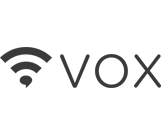Pay Per Click Advertising
Recently we’ve discussed the four ‘legs’ of successful internet marketing.
- Social Media Optimization
- Website Optimization
- Search Engine Optimization
- Pay for Performance Advertising
We’ve covered the first three and now we’ll discuss Pay for Performance Advertising. As we speak this model is being eclipsed but you should know how it works and why it is so much more effective than traditional ads in print, on radio or TV. In it’s purest sense you are purchasing words and phrases you think your target audience will type into the search box. The cost of those words is based on a number of criteria including:
- How popular those searches are
- Who else is buying those words
- Where the devices (phones, tablets, laptops, desktops) are located
- Where your business is located
- How many times people click on your ad
Purchased directly through social media networks, ISP’s, and search engines, Pay for Performance advertising, also referred to as Pay-Per-Click, (PPC), or Cost-Per-Click, (CPC), ads theoretically match your ad to the people looking for your product or service. But it’s not quite that easy. You have to define ad groups and if it’s your first time you might be off a little bit. Provided you know who and where your audience is you’ll need a call to action to make them click on your ad. When they do the next steps are critical. You have to know BEFORE you launch your campaign what your purpose is: more website visits, walk-ins, phone calls, or online sales. Then that ad has to be connected to a landing page with a quick link to join and if appropriate purchase. That data also has to be optimized for mobile devices. If you can’t effectively navigate this process on a mobile device then save your money.
Here’s what you need to ensure a successful campaign:
- A product and service you believe in
- an ad budget to promote it
- a call to action to generate clicks
- a mobile or mobile responsive landing page and website
- a social media presence to establish you as a trusted and established business
- an idea of what your competition is doing online
- an understanding that this is a learning process with a learning curve
Assuming you have all those boxes checked your first shot at it can be structured as an A-B campaign. In other words, you can use exactly the same ad with different headlines or images or colors and then track response. If ad “A” performs better than ad “B” then you can remove ad “B” and based on what you think made “A” better, create another ad, “C”, and see if that out performs “A”. So even with the road map you’ll need to manage, or hire someone like VOX, LLC to manage, your campaign(s). Because the real difference between PPC campaigns and a TV ad is that you can see how people are or are not interacting with your message. And what makes it truly great is that you can then adjust the campaign accordingly. In a future post we’ll discuss conversion rates.

















